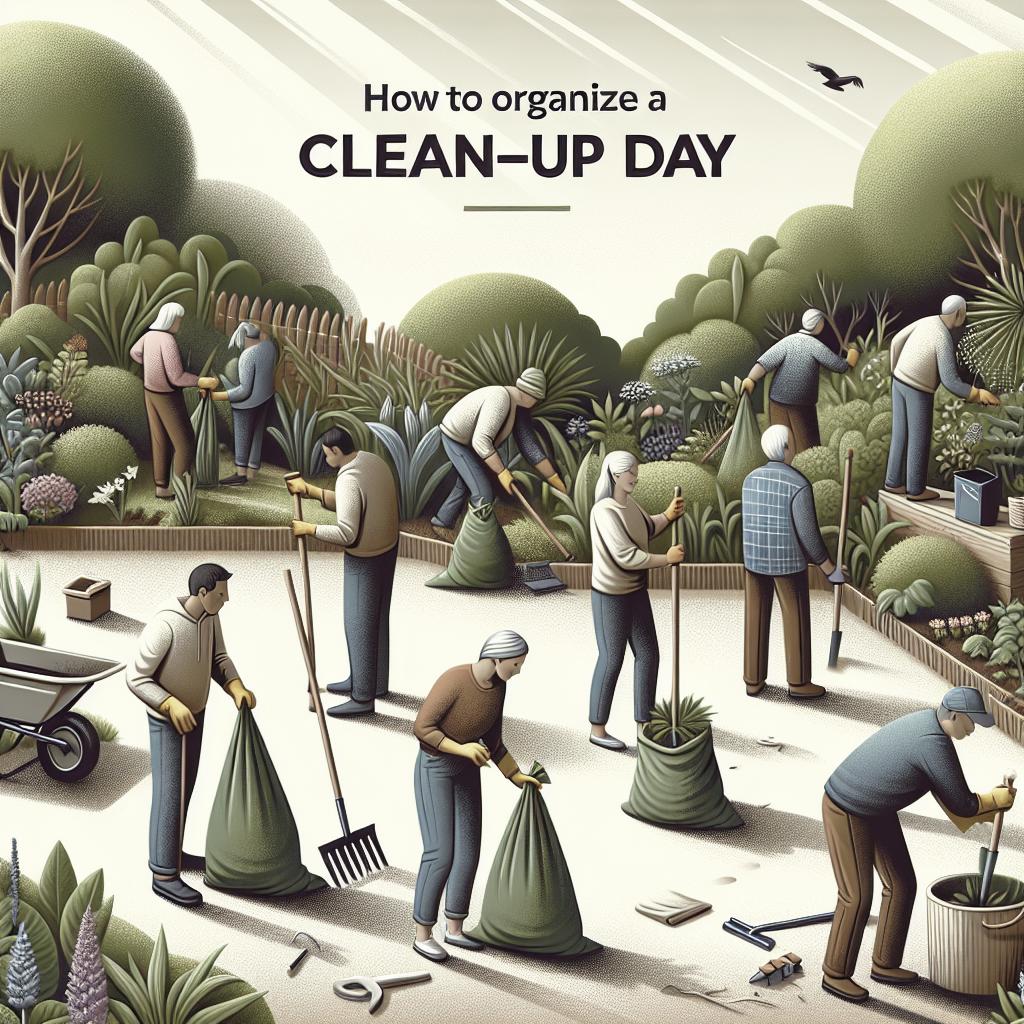“`html
Spring is a season of renewal and revitalization, making it the perfect time to give your garden a thorough cleaning. However, it’s crucial to approach this task with wildlife in mind. By understanding how to maximize the wildlife value of your garden clean-up, you can create a healthy and thriving ecosystem right in your backyard. In this blog post, we’ll explore effective strategies for both spring and fall clean-ups, discuss the best timing, and offer practical tips to ensure your efforts benefit local wildlife. We’ll cover cutting back stems, spring pruning, leaving leaves, preserving brush piles and stumps, and being mindful of your steps. Whether you’re an avid gardener or just looking to tidy up your outdoor space, this guide will help you make the most of your garden clean-up day.
How to approach spring clean-up for maximum wildlife value
Spring is an ideal time for garden clean-up, as the natural growth cycle of plants begins anew. However, it’s essential to approach this task in a manner that benefits local wildlife. Birds, insects, and small mammals often rely on garden habitats for food and nesting, so a thoughtful clean-up can provide them with continued support.
Start by assessing the current state of your garden. Identify areas that need attention, such as overgrown shrubs, fallen leaves, or twigs. Prioritizing these areas can help you create a step-by-step plan. Incorporate native plants and flowers that attract pollinators, and be mindful of any nesting sites that need to be preserved.
Why hold off on fall clean-up?
Holding off on fall clean-up can have significant benefits for the wildlife in your garden. Many creatures use the debris left behind during fall to find shelter and food during the colder months. By leaving these materials until spring, you can provide a crucial lifeline for them.
During the fall, garden debris such as fallen leaves, dead stems, and seed heads offer protection and sustenance to various species of insects and small animals. Birds often forage for seeds and insects hidden within these elements. Additionally, many native plants rely on this seasonal cycle to reseed naturally and support the biodiversity of your garden.
When to clean up:
Determining the best time to clean up your garden is crucial for maintaining its health and supporting wildlife. In general, it’s best to wait until the temperatures are consistently mild. This usually means waiting until late spring when plants begin to show new growth.
Monitoring your local environment is also essential. Look for signs such as the emergence of insects, budding trees, and increased bird activity. These indicators can help you pinpoint the most opportune moment to start your clean-up without disrupting the delicate ecosystem within your garden.
How to clean-up while maximizing wildlife value:
Cutting back stems:
When cutting back stems, it’s important to adopt a more selective approach. Rather than removing every dead stem or branch, consider trimming just enough to tidy up while leaving some habitat for wildlife. Certain insects, such as bees and butterflies, use hollow stems for nesting.
To achieve this balance, identify which plants can be cut back without causing harm. Leave standing stems of native flowers, and avoid cutting more than one-third of the plant at any given time. This method ensures that both the plant and the wildlife depending on it will thrive.
Spring pruning:
Spring pruning is a critical task for maintaining the health and aesthetics of your garden. However, like cutting back stems, it’s essential to consider the impact on local wildlife. Aim to prune early in the spring before birds start building nests in your shrubs and trees.
Pruning not only shapes your plants but also encourages vigorous growth and blooms. Be especially mindful when dealing with fruiting plants, as they provide important food resources for birds and small mammals. Leave some older branches that can serve as perches or shelter for these creatures.
Leave the leaves:
While it might be tempting to rake away all the fallen leaves for a tidy garden, consider leaving them in place or using them as mulch. Leaves offer a natural blanket for the soil, protecting roots from temperature fluctuations and retaining moisture.
Additionally, leaf litter creates a habitat for decomposers like earthworms, which contribute to soil health. It also provides a food source for birds and small animals. If you must gather leaves, consider creating a leaf pile in a corner of your garden where wildlife can still benefit.
Brush Piles and stumps:
Maintaining brush piles and leaving stumps in your garden can serve as vital habitat features for various species. Brush piles offer shelter and nesting sites for birds, small mammals, and beneficial insects.
Similarly, old stumps can be home to fungi and insects, contributing to the ecological diversity of your garden. Rather than removing all such debris, arrange it in a manner that allows for wildlife habitation. This act can turn potential garden waste into valuable resources for local fauna.
Watch your step:
Being careful about where you step during your garden clean-up is more critical than you might think. Many insects, including beneficial ones like ladybugs and ground beetles, live on the ground within plant litter.
Furthermore, stepping on emerging plants or delicate shoots can damage them before they have a chance to grow. Use stepping stones or designated pathways to move around your garden, minimizing the impact on the ecosystem.
Final thoughts:
Organizing a garden clean-up day with wildlife in mind enriches both your garden and the local ecosystem. By adopting thoughtful practices like selective cutting, careful pruning, leaving leaves, and preserving habitats, you create a harmonious space where plants and animals can thrive together. Not only does this approach make your garden look beautiful, but it also contributes to biodiversity and environmental health.
| Action | Method | Wildlife Benefit |
|---|---|---|
| Cutting back stems | Selective trimming, avoiding more than one-third removal | Preserves insect nesting sites |
| Spring pruning | Prune early before nesting season | Encourages plant health and provides perches for birds |
| Leave the leaves | Use leaf litter as mulch or create a dedicated leaf pile | Improves soil health and provides habitat for decomposers |
| Brush piles and stumps | Maintain and arrange in corners of the garden | Offers shelter and food sources for various species |
| Watch your step | Use pathways or stepping stones | Protects ground-dwelling insects and emerging plants |
By adhering to these guidelines, you ensure that your garden is not only clean but also a sanctuary for wildlife, promoting a balanced and thriving environment.
“`


